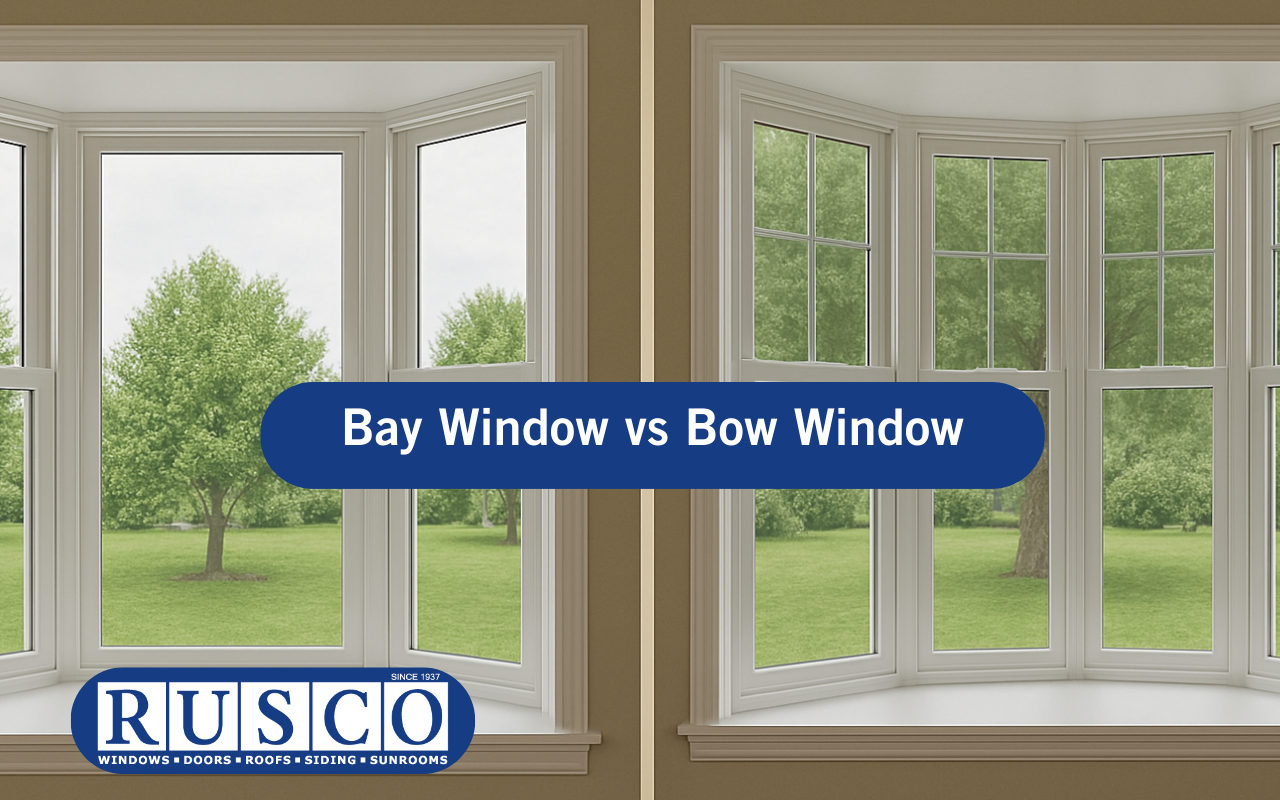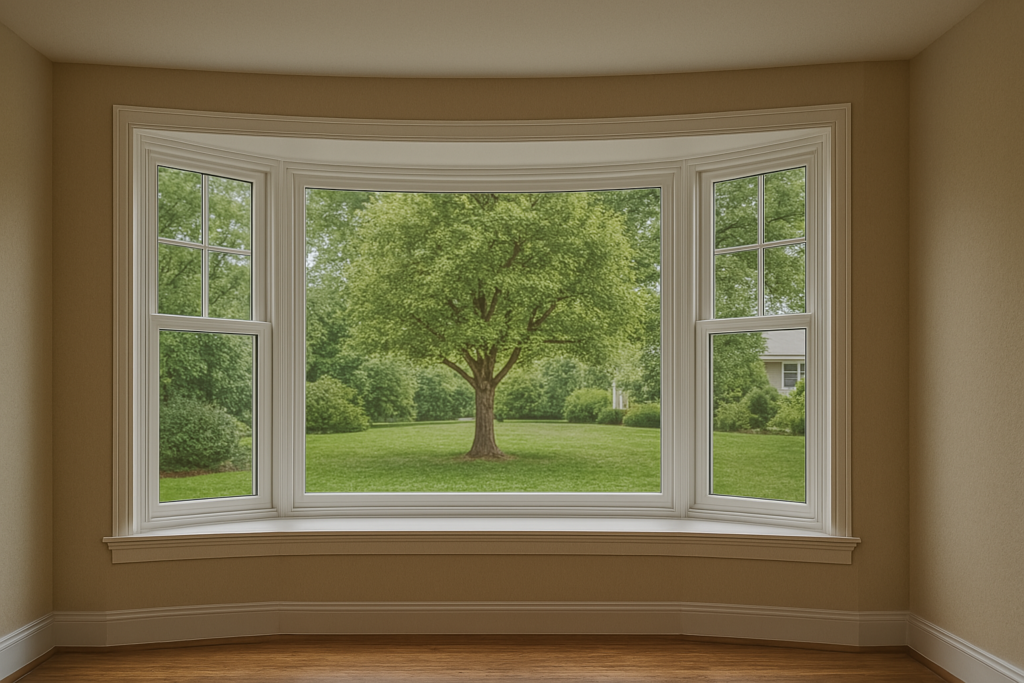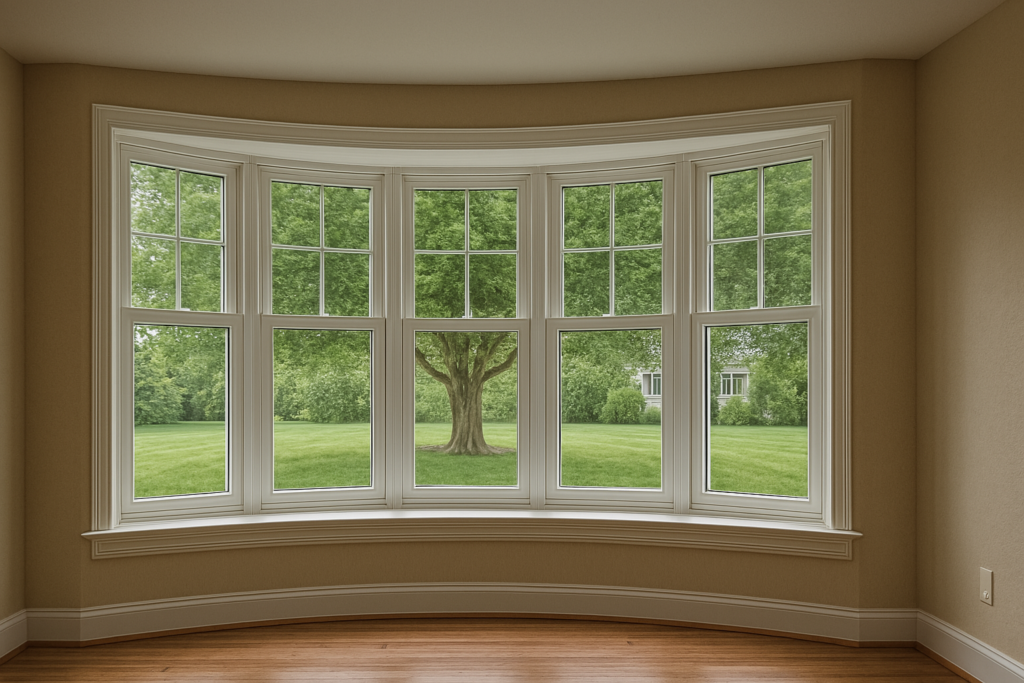At first glance, telling the difference between a bay window vs bow window can be tricky. They both look similar and add charm to a home. But the truth is, there are some key distinctions. We’ll break down what sets them apart and help you decide which one is the right fit for your space.
Bay and bow windows can both enhance a home’s overall design, bring in more natural light, and create additional space, but they do so in different ways. We’ll walk you through the differences of each style so you can confidently choose which works best for your home.
Explore whether a bay or bow window is best for your home.
What Is A Bay Window?
A bay window features three window panels that project outward from the home. The center is usually a large, fixed picture window, flanked on both sides by operable windows and often at 45 or 90-degree angles. This angled design creates a little alcove inside your room, giving you extra floor space and an excellent spot for a window seat, reading nook, or accent furniture.
Bay windows don’t just change the look of your home’s exterior, they make a room feel more open and bright. They also offer a panoramic view, improved airflow, and can serve as a stunning architectural feature. Learn more about bay window installation at Rusco.
What Is A Bow Window?
Unlike bay windows, bow windows use four or more equal-sized panes that curve outward in a smooth arc. This curved shape gives them a softer, more traditional look and can beautifully complement classic or Victorian-style homes. Most bow windows feature casement-style panels that can open to let in fresh air.
The rounded design of a bow window brings in even more natural light than a bay window and offers a wider view of the outside. It also provides versatile space inside — whether you want extra room for seating, décor, or just a brighter, more open feel.
Request a free quote for custom bow or bay window installation
Bay Vs. Bow Windows: What Are The Similarities And Differences?
While both bay and bow windows are designed to project from the home and let in more light, there are a few core differences. A bay window usually has three panels and a more angular shape, while a bow window features four or more panels in a curved layout. The result is a more dramatic bump-out with a bay window and a more seamless, rounded appearance with a bow.
Bow windows tend to provide more light and a broader view, while bay windows often create more usable interior space. If you’re deciding between a bow window vs bay window, consider whether your home would benefit more from the defined angles of a bay or the smooth curve of a bow.
Benefits Of Having A Window That Sticks Out From House
Whether you choose a bay or bow, a window that sticks out from the house has plenty of advantages. Both styles expand your usable interior space, increase natural lighting, and elevate curb appeal. They also enhance your connection to the outdoors by offering scenic views and beautiful focal points inside and out.
These windows can be tailored to your style and needs. From cozy seating areas to bright corners for plants or home décor, they create new opportunities in your home’s layout. When installed with quality materials, they can also improve energy efficiency and increase resale value. For tips, see what to look for in a high-quality window.
With Over 87 Years Of Experience, Trust Rusco For Your Window Installation and Replacement
You now know the key differences between a bay window vs bow window and it’s time to bring that vision to life. Whether you’re looking to boost natural light, to add visual interest to your exterior, or it’s time to create a custom space indoors, Rusco Windows & Doors is here to help.
With over 87 years of experience in the Chicagoland area, our team of professionals offers high-quality bay and bow window installations tailored to your home’s design and your personal preferences. We stay current with modern window design trends and use only the best materials to ensure long-lasting performance and beauty. Learn more about our bay window options or request a free quote to get started.



